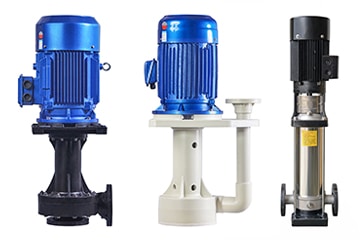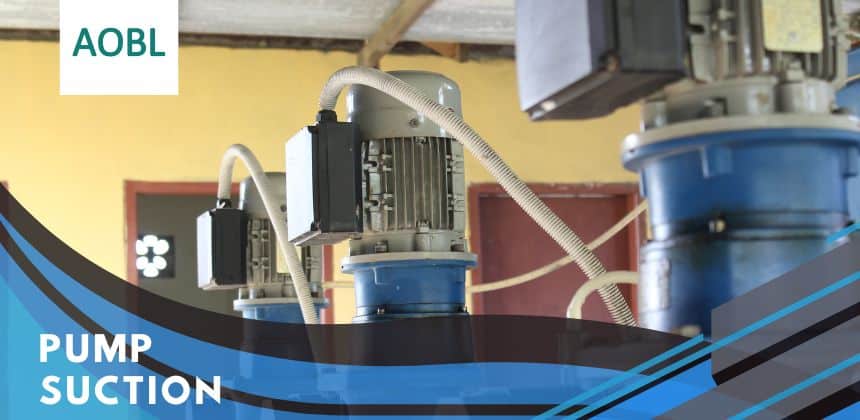Pump Suction
What is pump suction?
Pump suction refers to the process by which a pump draws fluid through an inlet to initiate the flow of fluid through the pump and its connected systems. Proper pump suction design is critical to ensure efficient pump operation and prevent problems such as cavitation, loss of priming and mechanical failure.
Working Principle of Pump Suction
The working principle of pump suction is to suck the fluid from the low-pressure area into the pump chamber by the mechanical action of the pump, and then push it to the high-pressure area by pressure or kinetic energy, so as to realize the transportation of liquid or gas.
Working process
Start-up phase: The pump rotates or reciprocates through mechanical parts such as the impeller or piston, generating negative pressure. This negative pressure causes the fluid to be sucked into the inlet of the pump.
Suction process: The fluid is pulled into the suction chamber of the pump under negative pressure. The design of the pump ensures that during suction, the pressure of the fluid is higher than its vapor pressure, thus avoiding the occurrence of cavitation.
Compression and Discharge: When the fluid enters the pump chamber, the pump applies pressure to the fluid through the movement of the impeller or piston, pushing it into the high pressure zone, where it is delivered to the target location through the pump outlet.
Energy conversion: The pump works to convert the input mechanical energy (e.g. motor drive) into kinetic or pressure energy of the fluid, thus realizing the flow of the fluid.
Classification Of Pump Suction
Centrifugal pump suction: Centrifugal force is generated through the rotation of the impeller to draw in and discharge the liquid, suitable for handling large quantities of low-viscosity liquids.
Positive displacement pump suction: The use of the pump cavity volume changes to promote the liquid, such as piston pumps, suitable for high-viscosity liquids and the need for higher pressure occasions.
Self-priming pumps: The pump can automatically exhaust and suck in the liquid after starting, commonly used in sewage treatment or liquid level lower than the pump system.
Pumping Applications
Pump suction is widely used in many industries and applications, here are a few common application scenarios:
Industrial sector:
- Chemical industry: Used to transport corrosive liquids, high viscosity fluids and hazardous chemicals. Pump suction can ensure the safe transportation of fluids, such as in the pharmaceutical and petrochemical fields.
- Wastewater Treatment: Self-priming pumps are commonly used in wastewater treatment plants for lifting wastewater from a low point to a treatment facility for filtration and purification.
Agricultural irrigation:
- Pump suction systems are commonly used in agriculture to transport water from rivers, lakes, or groundwater sources to fields to ensure that crops are adequately irrigated. Axial and centrifugal pumps are common choices.

Municipal Water Supply and Drainage:
- Water supply and drainage systems in municipal facilities use pumping and suction technology to ensure that water is distributed and wastewater is discharged, safeguarding the water needs of city residents and environmental sanitation.
Household and building systems:
- In domestic water supply systems, small pumping and suction devices are used for water storage and distribution to ensure stable water pressure. Self-priming pumps are commonly used in swimming pools and heating, ventilation and air conditioning (HVAC) systems.
Oil & Gas:
- In oil extraction, pump suction is used to transport crude oil from the ground to the surface. In the natural gas industry, pump suction technology ensures the safe transfer of liquid gases.
Pumping And Auction Equipment Selection
- Flow requirements: Select the pump based on the flow requirements of the system to ensure that the maximum and minimum flow ranges are met.
- Head requirements: Determine the head according to the pressure and height difference that the pump needs to overcome, the pump must have enough head to work effectively.
- Liquid characteristics: According to the viscosity and corrosiveness of the liquid to select the appropriate pump material and type. For example, viscous liquids can choose a volumetric pump, corrosive liquids need to be corrosion-resistant materials of the pump.
- Pump type: Common types include centrifugal pumps, positive displacement pumps and self-priming pumps, the choice of the right type depends on the characteristics of the liquid and application scenarios.
- Effciency and cost: Choosing a highly efficient pump can reduce operating costs, especially for long-term operation of the system.
Cavitation And Pump Suction
Cavitation is the process of pump operation, when these bubbles with the fluid into the high-pressure region, the bubbles quickly rupture, resulting in a strong impact, the pump impeller and other internal components caused by erosion and damage. It is mainly related to the pressure at the suction inlet of the pump. When the suction pressure of the pump is insufficient, the pressure at the suction inlet of the pump may drop below the vapor pressure of the fluid, causing cavitation.
How to avoid cavitation?
Increase NPSHa
Ensure that the pressure at the pump suction port is high enough so that it is always greater than the vapor pressure of the liquid.
Increase the liquid level
Reduce the length or complexity of the suction piping to reduce piping friction losses.
Use larger diameter suction piping to reduce flow rates and pressure losses.
Lower the liquid temperature: Higher temperatures increase the vapor pressure of the liquid, so lowering the liquid temperature reduces bubble formation.
Choose the right pump
Select a pump with a lower NPSHr (Net Positive Suction Head Required) for the application to ensure it is adapted to the specific operating conditions.
Avoid excessive suction lift
If the pump needs to draw the liquid in from a lower position, too high a suction lift can lead to low suction port pressures and increase the risk of cavitation.
Summary
Proper pump suction design and management are critical to ensuring the efficient operation and longevity of pumping systems. Whether applied in industrial processes, water treatment plants, or HVAC systems, understanding the principles of suction lift, cavitation prevention, and suction head balance will help avoid costly downtime and maintenance.
AOBL Pump Manufacturers is a leading provider of high performance pump solutions. Including EODD pumps, sanitary diaphragm pumps, filter press feed pumps, and chemical pumps, We understand that every application is unique. Therefore, we work closely with our customers to tailor pump solutions to meet their specific needs.

